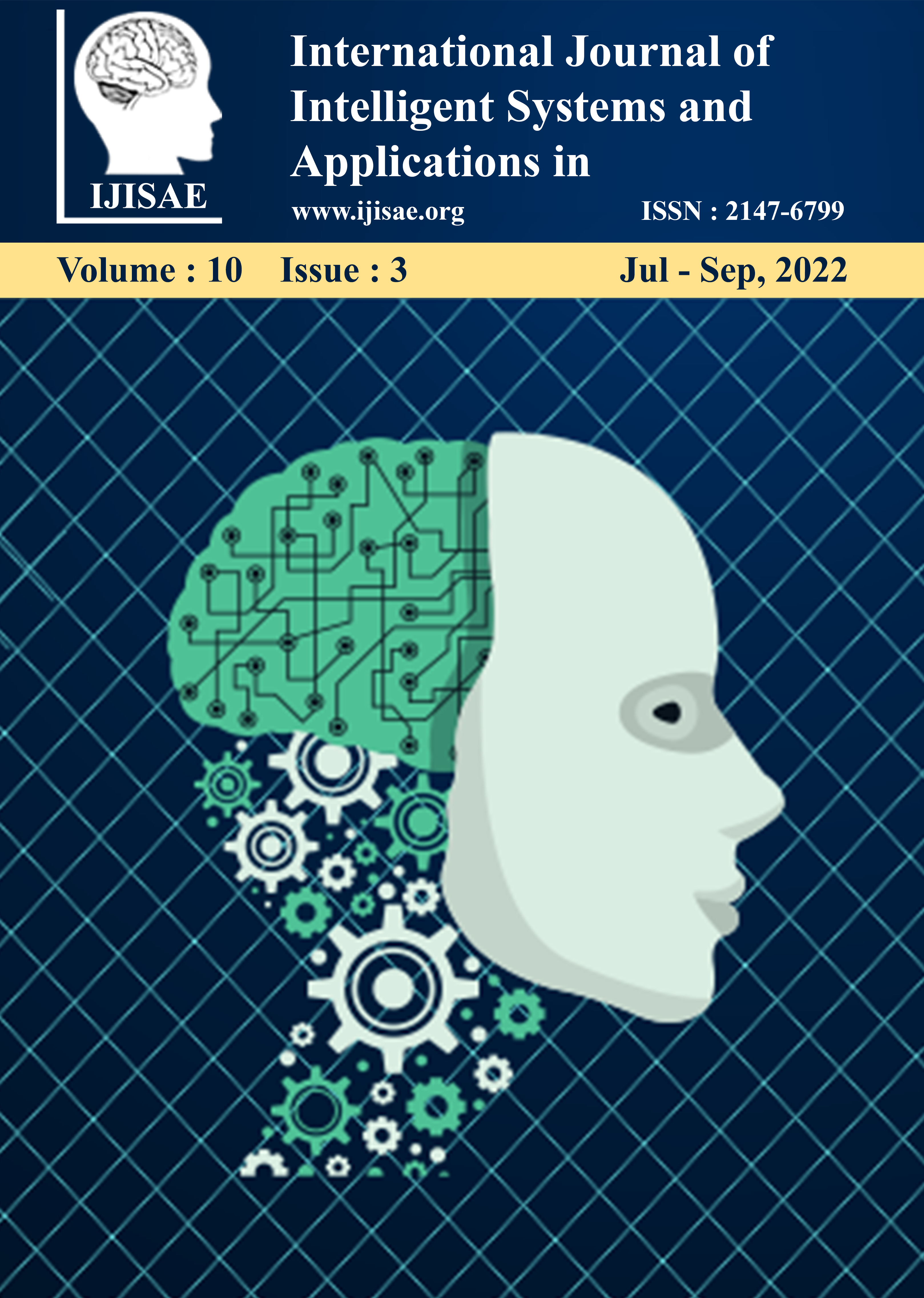Archetype Changes and the Use of Technology In The Field Of Marketing Research And Consumer Study
Keywords:
Consumer Study, Artificial Intelligent, Chat bots, Algorithms, Human intelligenceAbstract
Marketing in the current era has become very much critical and understanding the human brain and its behavior is also very critical. However, without an understanding of behavior serving the consumer with the product is difficult. However, every company somehow managed to get the data about human behavior through some surveys and then make the analysis and come out with a strategy. But as the data is increasing and the behavior of consumers is also becoming unpredictable, studying the minute issues and reaching the consumer is difficult. In such cases, the only option left for the marketers is to depend on some intelligence that can be used to solve the issues and come up with solutions. Therefore, artificial intelligence can replace human intelligence in cracking the problem and of course again use human intelligence to formulate the strategies to reach the consumer. This paper discusses how the and other technological tools are playing a major role in the marketing context and how critically they are used in solving the issues faced by the consumers in very diversified situations and finally getting the best for their satisfaction.
Downloads
References
Bernard Marr. (2021, July 13). The key definitions of Artificial Intelligence (AI) that explain its importance. Bernard Marr. Retrieved July 6, 2022, from https://bernardmarr.com/the-key-definitions-of-artificial-intelligence-ai-that-explain-its-importance/
Berthon, P. R., & Pitt, L. F. (2018). Brands, truthiness and post-fact. Journal of Macromarketing, 38(2), 218–227. https://doi.org/10.1177/0276146718755869
Burke, R. R. (1997). Do you see what I see? the future of virtual shopping. Journal of the Academy of Marketing Science, 25(4), 352–360. https://doi.org/10.1177/0092070397254007
Burke, R. R. (2002). Technology and the customer interface: What consumers want in the physical and Virtual Store. Journal of the Academy of Marketing Science, 30(4), 411–432. https://doi.org/10.1177/009207002236914
Digital Revolutions in public finance. (2017). https://doi.org/10.5089/9781484315224.071
Dorr, B. J. (2001, July 30). Review of Natural Language Processing in R.A. Wilson and F.C. Keil (eds.), the MIT Encyclopedia of the cognitive sciences. Artificial Intelligence. Retrieved July 6, 2022, from https://www.sciencedirect.com/science/article/pii/S0004370201000960
Agrawal, A. ., and G. . Tiwari. “Design Simulation and Assessment of Computer Based Cancer Diagnosis Accuracy Using ART 1.0 Algorithm”. International Journal on Recent and Innovation Trends in Computing and Communication, vol. 10, no. 3, Apr. 2022, pp. 25-34, doi:10.17762/ijritcc.v10i3.5522.
Excerpt: Digital Revolutions in public finance. (2017). https://doi.org/10.5089/9781484323823.073
Leite, E., & Bengtson, A. (2018). A business network view on value creation and capture in public-private cooperation. Industrial Marketing Management, 73, 181–192. https://doi.org/10.1016/j.indmarman.2018.02.010
Osmonbekov, T., & Johnston, W. J. (2018). Adoption of the internet of things technologies in business procurement: Impact on organizational buying behavior. Journal of Business & Industrial Marketing, 33(6), 781–791. https://doi.org/10.1108/jbim-10-2015-0190
Ottawa, M. (2021). Leveraging customer insights with 5G. The Machine Age of Customer Insight, 65–76. https://doi.org/10.1108/978-1-83909-694-520211007
Paschen, J., Kietzmann, J., & Kietzmann, T. C. (2019). Artificial Intelligence (AI) and its implications for market knowledge in B2B marketing. Journal of Business & Industrial Marketing, 34(7), 1410–1419. https://doi.org/10.1108/jbim-10-2018-0295
Robson, K., Plangger, K., Kietzmann, J. H., McCarthy, I., & Pitt, L. (2016). Game on: Engaging customers and employees through gamification. Business Horizons, 59(1), 29–36. https://doi.org/10.1016/j.bushor.2015.08.002
Syam, N., & Sharma, A. (2018). Waiting for a sales renaissance in the Fourth Industrial Revolution: Machine Learning and Artificial Intelligence in sales research and Practice. Industrial Marketing Management, 69, 135–146. https://doi.org/10.1016/j.indmarman.2017.12.019
Turunen, T., Eloranta, V., & Hakanen, E. (2018). Contemporary Perspectives on the strategic role of information in internet of things-driven industrial services. Journal of Business & Industrial Marketing, 33(6), 837–845. https://doi.org/10.1108/jbim-06-2017-0153
Baes, A. M. M. ., Adoptante, A. J. M. ., Catilo, J. C. A. ., Lucero, P. K. L. ., Peralta, J. F. P., & de Ocampo, A. L. P. (2022). A Novel Screening Tool System for Depressive Disorders using Social Media and Artificial Neural Network. International Journal of Intelligent Systems and Applications in Engineering, 10(1), 116–121. https://doi.org/10.18201/ijisae.2022.274
Valacich, J. S., & Brown, S. A. (2018). A comment on “is information systems a science?” Communications of the Association for Information Systems, 211–216. https://doi.org/10.17705/1cais.04314
Linda R. Musser. (2020). Older Engineering Books are Open Educational Resources. Journal of Online Engineering Education, 11(2), 08–10. Retrieved from http://onlineengineeringeducation.com/index.php/joee/article/view/41
Walters, M., & Bekker, J. (2017). Customer super-profiling demonstrator to enable efficient targeting in marketing campaigns. South African Journal of Industrial Engineering, 28(3). https://doi.org/10.7166/28-3-1846
Łapińska, M. (2019). Martech — Marketing Technology A Rozwój platform SAAS do Automatyzacji Marketingu. Marketing i Rynek, 2019(3), 17–24. https://doi.org/10.33226/1231-7853.2019.3.2
Downloads
Published
How to Cite
Issue
Section
License

This work is licensed under a Creative Commons Attribution-ShareAlike 4.0 International License.
All papers should be submitted electronically. All submitted manuscripts must be original work that is not under submission at another journal or under consideration for publication in another form, such as a monograph or chapter of a book. Authors of submitted papers are obligated not to submit their paper for publication elsewhere until an editorial decision is rendered on their submission. Further, authors of accepted papers are prohibited from publishing the results in other publications that appear before the paper is published in the Journal unless they receive approval for doing so from the Editor-In-Chief.
IJISAE open access articles are licensed under a Creative Commons Attribution-ShareAlike 4.0 International License. This license lets the audience to give appropriate credit, provide a link to the license, and indicate if changes were made and if they remix, transform, or build upon the material, they must distribute contributions under the same license as the original.






